Metropolitan Waterworks Museum Boston
Chestnut Hill's Master Museum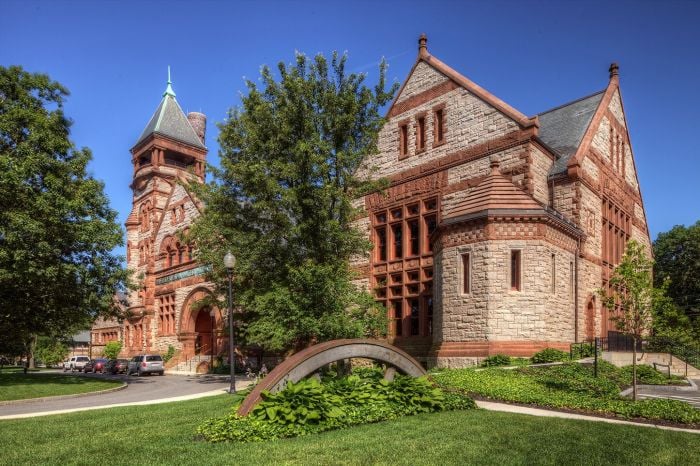
The Metropolitan Waterworks Museum, housed in an architecturally beautiful building, features mammoth steam pumping engines of the late 1800's. Located across the street from the historic Chestnut Hill Reservoir, the site unveils a most unique story of one of the country’s earliest metropolitan water systems.
Originally a high-service pumping station, the venue contains impressively-preserved one-of-a-kind mechanical engineering devices in a Richardsonian Romanesque building. It is truly a stunning, historical treasure.
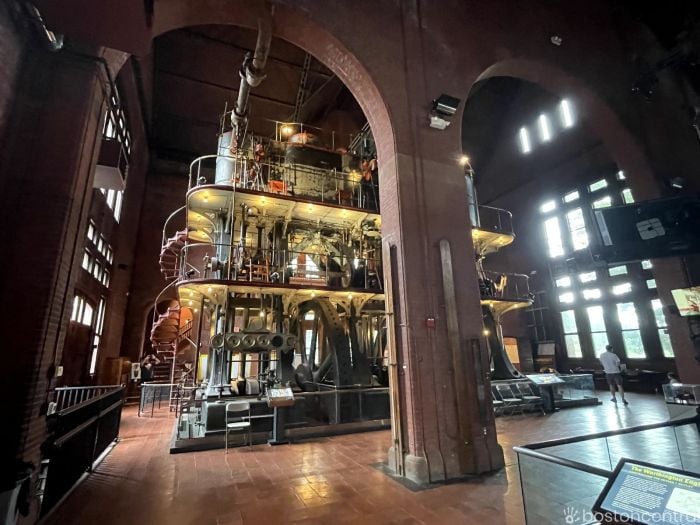
The museum was opened in 2011, after a massive restoration project brought the pumping station back from 50 years of abandonment and disrepair and turned it into the stunning showcase of historic significance and wonder that it is today.
When the Chestnut Hill Pumping Station opened in 1887 it was equipped with two Holly-Gaskill pumping engines, each with a capacity of eight million gallons per day. The Leavitt pumping engine was installed in 1894, and became the lead pump and ran with respectable efficiency, but due to its unusual design, it required frequent maintenance.
While there is a wealth of history about this building and the pumps, I will just give you a brief overview of our experience and to whet your whistle for your own visit. Beyond being completely amazed at the history and the machinery of found here, I also came away with a heightened appreciation to have such easy access to water today.
Great Engines Hall
The centerpiece of the Waterworks Museum is its collection of steam engines. As mentioned above, three original coal-powered, steam-driven water pumps are preserved at the Museum and are monuments to 19th century technology and innovation. Leavitt, Worthington, and Allis stand in the Great Engines Hall and reach more than 3 stories tall.
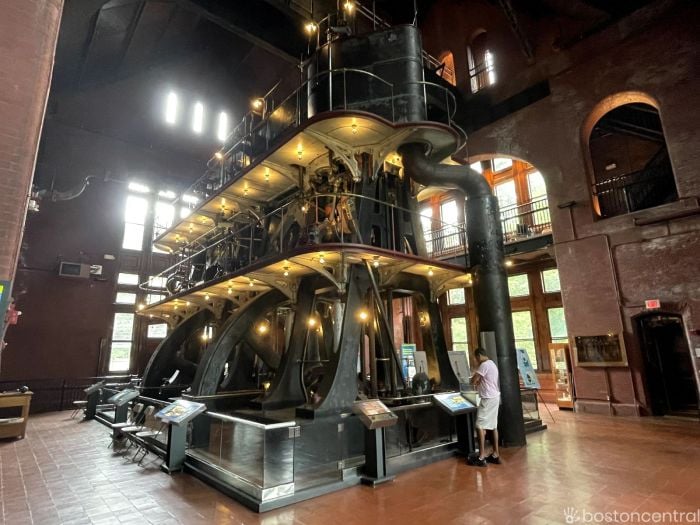
photo credit: BostonCentral (Allis Pump)
These mammoth machines, fueled by coal and driven by steam power, once pumped millions of gallons of freshwater daily into the heart of Boston. Leavitt, Worthington, and Allis, the three towering engines, stand as monuments to the technological brilliance of the 19th century.
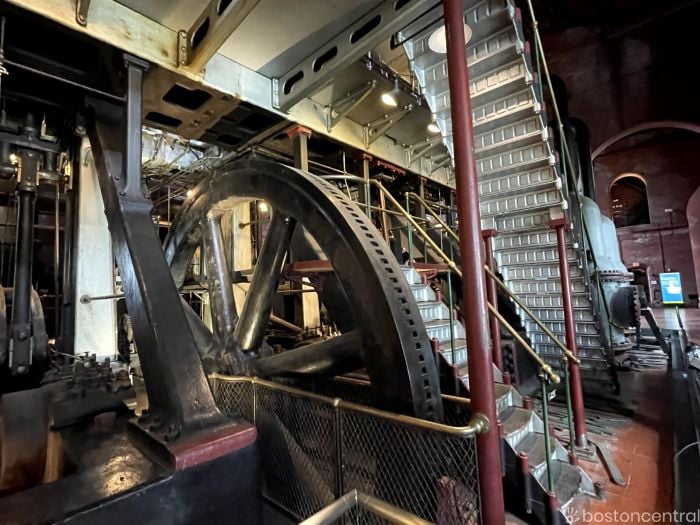
photo credit: BostonCentral (Leavitt Pump - closeup)
A walk around each engine reveals the intricate craftsmanship that made these giants operate seamlessly, providing a millions of gallons of freshwater per day to the growing city of Boston.
The Worthington pump is the "newest" of the three housed in the great engine hall. A bit smaller in scale and ultimately more efficient, (as most new technology is), it was brought online as Boston's population and water consumption continued to grow.
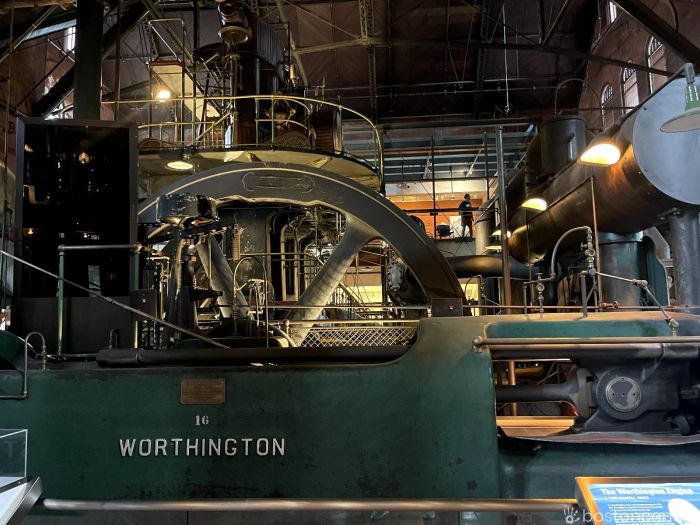
photo credit: BostonCentral (Worthington Pump)
Several of these massive pumps operated every day through the 1970’s, when the site was taken offline, and Boston’s main water source shifted to the Quabbin Reservoir.
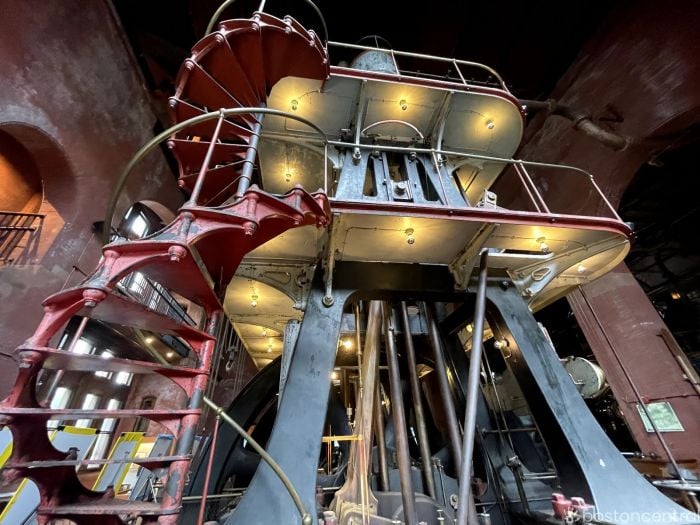
Guests can tour the museum for free, and there is a "special access" guided tour where you can climb to the second level of the two main pumps, as well as to descend below to the sub basement see the massive inner workings.
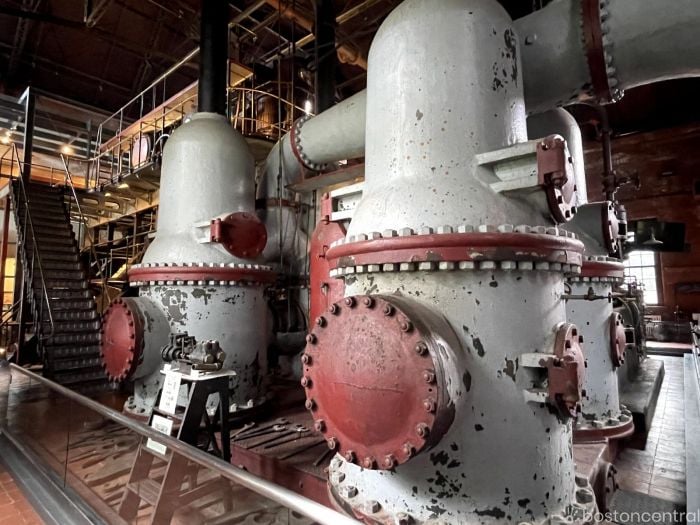
The sheer size and scale of these mechanical wonders will bring a sense of awe to any visitor. The well thought out interactive information kiosks tell the story of how these necessary giants were designed and how the city of Boston gets its potable water.
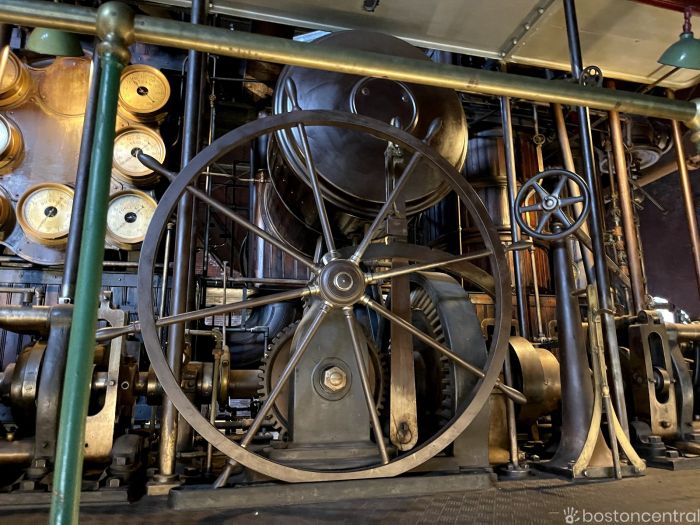
The architectural style used by Vinal and Wheelwright in 1897 for the museum building was Richardsonian Romanesque, and designed by famed architect H. H. Richardson.

The best local example of H.H. Richardson’s work in Boston is Trinity Church in Copley Square. When one looks at the two buildings through the lens of architectural history, one can see the similarities. This led to MWM often being called the “Tabernacle of Steam.”
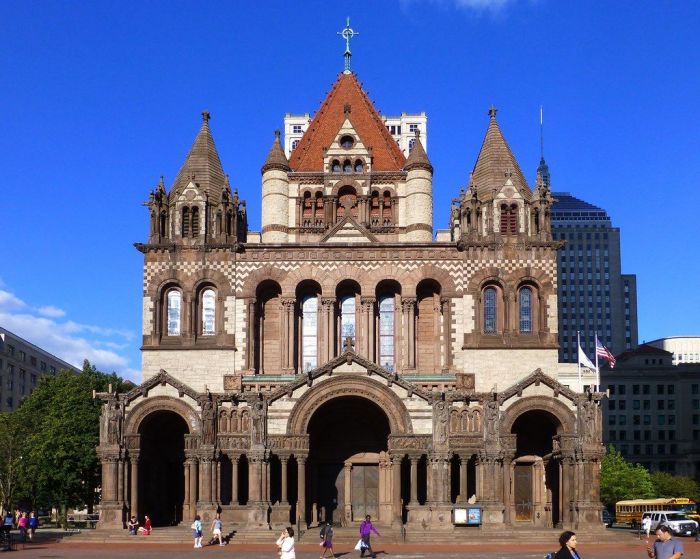
It's hard to believe that the same architect that designed Trinity Church also designed the massive pumping station for Boston Waterworks Pumping Station. And it was home to enormous mechanical pumps like these!
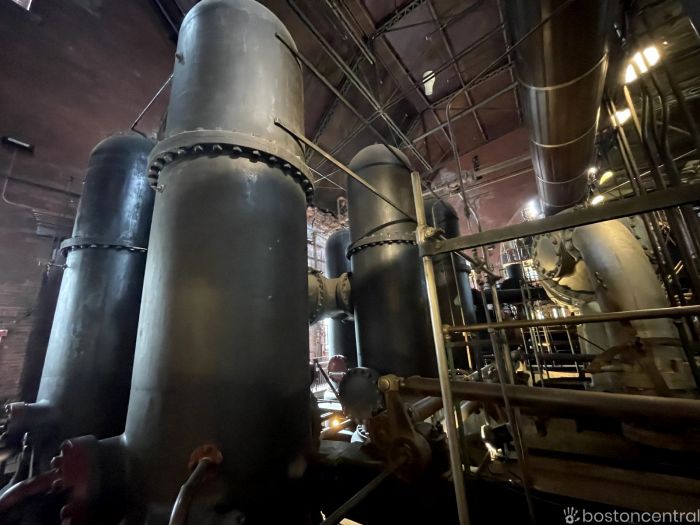
In addition to the machinery, there are a number of interactive stations and artifacts that invite visitors to get up close and personal to the centuries-old tools and mechanisms. These giant wrenches are heavy!
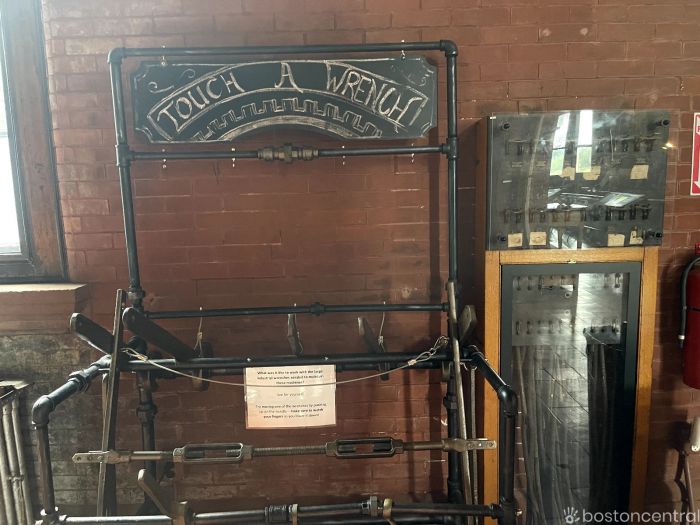
For the younger set, there are table set up to explore the concept of gears and pipes, as well as a number of educational activity sheets. The museum also runs a number of family-friendly events & tours throughout the year.
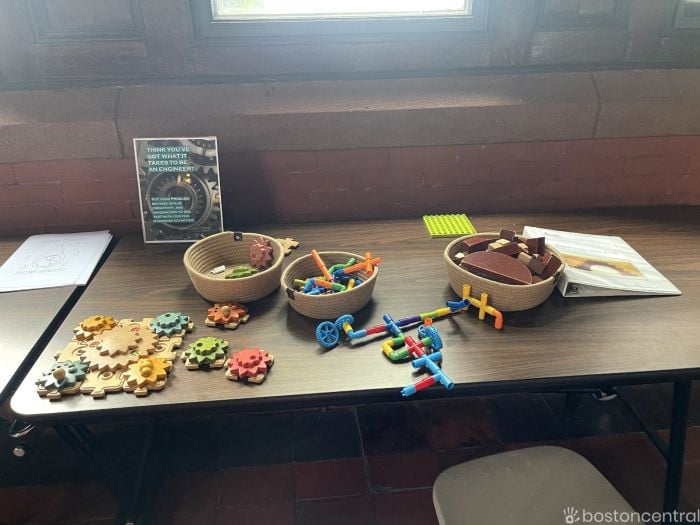
Artifacts
All around the museum you'll find interesting water & mechanical artifacts. Below, encased in glass, is a unique specimen - a wooden water pipe! Yes, back in the day, water was brought into homes by private companies that used wooden pipes.
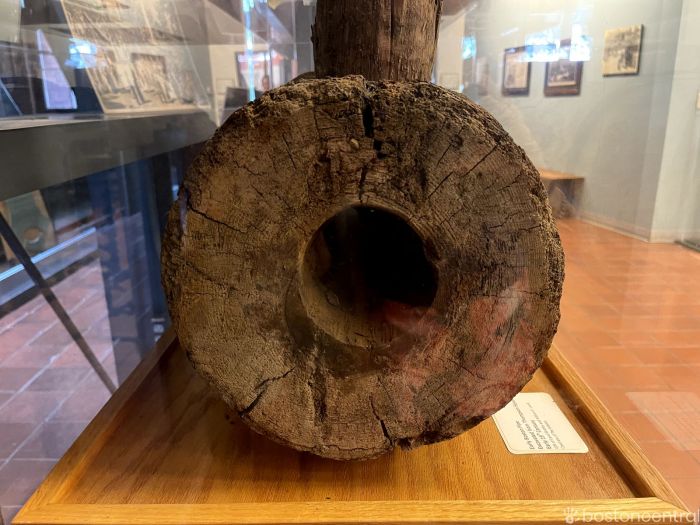
Beyond hauling water in buckets from nearby streams, or collecting rainwater, this would have been the only other option to get water for daily use.
Think of all of the ways you used water in a given day. Drinking, cooking, bathing, washing machines, lawn sprinklers, ice machines. And you can just turn on the tap and it's just there for you. This museum demonstrates how much effort and design went into developing a water system that many people take for granted today.
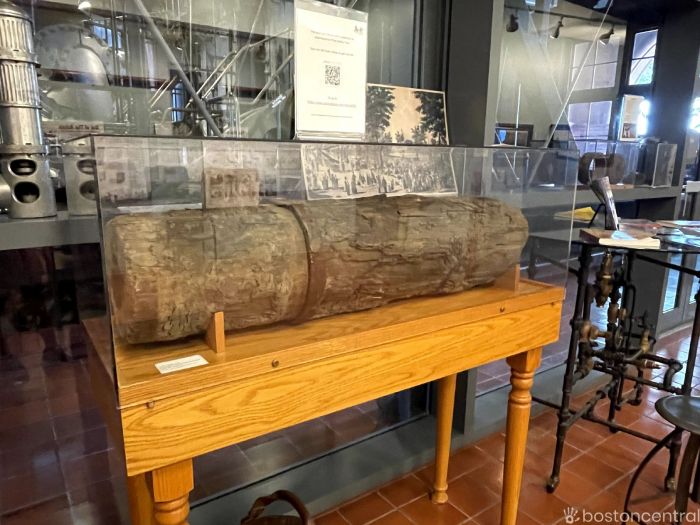
One can only imagine what this space would have sounded like when all of the engines and pumps were running. This perspective of the photograph below makes you feel that you are at the base of an enormous sewing machine.
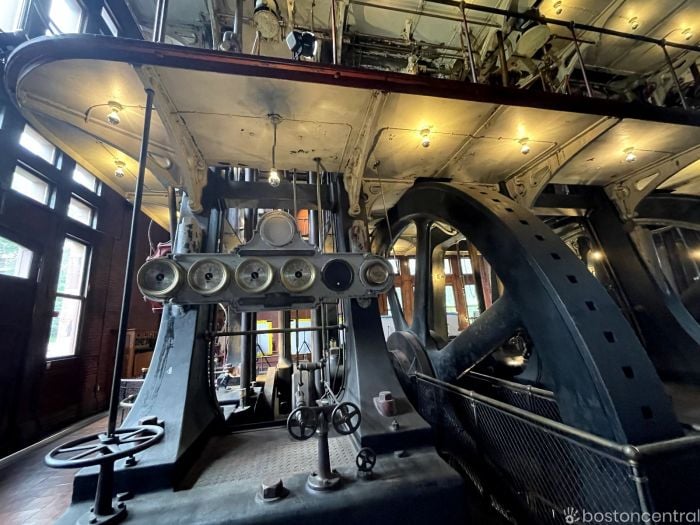 How & Where Does Boston Get it's Water?
How & Where Does Boston Get it's Water?
The original pumping station was built in 1887, but by the 1890’s, it was clear that demand had quickly outstripped the ability to transport sufficient water. As a result, the concept of a larger sourcing reservoir 60 miles west on higher terrain and later engineered.
The Quabbin Reservoir is now one of the largest unfiltered water supplies in the United States. The 412 billion gallon reservoir covers 39 square miles with 181 miles of shoreline.
Along with the Wachusett Reservoir and Ware River, it is the primary source of high quality water for the Massachusetts Water Resources Authority water supply system.
The Quabbin Reservoir: An Engineering Marvel in and of Itself
The Quabbin Reservoir is not a natural body of water - rather it was created upon the site of 4 towns. The 4 towns occupied a valley adjacent to the waters of the Swift River, the primary source for the Reservoir.
As the population began to increase in the late 1800s-early 1900s, Massachusetts started making a series of drinking reservoirs moving further and further west into the state.
By 1927, the state passed the Swift River Act, allowing the government to take the land by in the Swift River Valley by eminent domain. This meant that four entire towns – Dana, Enfield, Greenwich and Prescott were to be removed. As a result, the 2,500 residents in that area were forced to leave.
Learn more about the history of the Quabbin Reservoir and the 4 lost towns here.
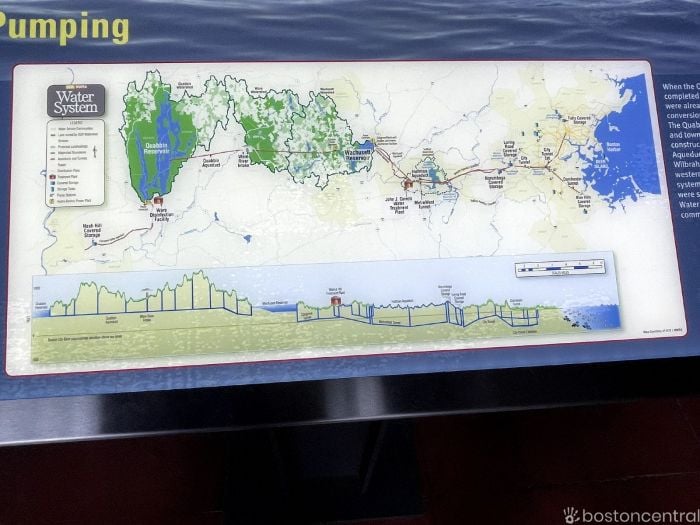 Overall - this museum is a simply fascinating place. We learned so much about how this beautiful building and its massive stream-engine pumps came to be; the history and the engineering prowess of Boston Waterworks, (which is WAY more interesting that you might think!); and got right up close to the engines the well-led all access tour. This is a totally different piece of the history of Boston than the Revolution and well worth a visit.
Overall - this museum is a simply fascinating place. We learned so much about how this beautiful building and its massive stream-engine pumps came to be; the history and the engineering prowess of Boston Waterworks, (which is WAY more interesting that you might think!); and got right up close to the engines the well-led all access tour. This is a totally different piece of the history of Boston than the Revolution and well worth a visit.
Parking
There is free on-site parking, and admission is also free, with a suggested donation of $5. Expect to spend about an hour or so if you opt for the self-guided tour.
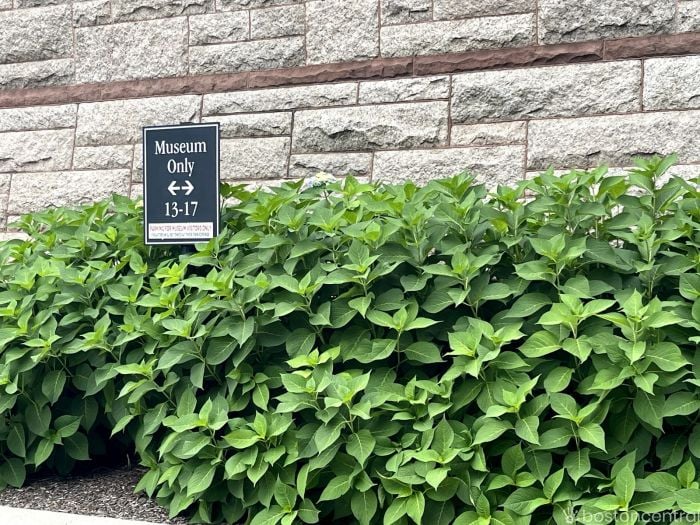
Stroll the Chestnut Hill Reservoir Loop
If it's a nice day, you extend your visit across the street to enjoy a walk, jog, or bike ride on the 1.5 mile paved trail loop around the Chestnut Hill Reservoir.
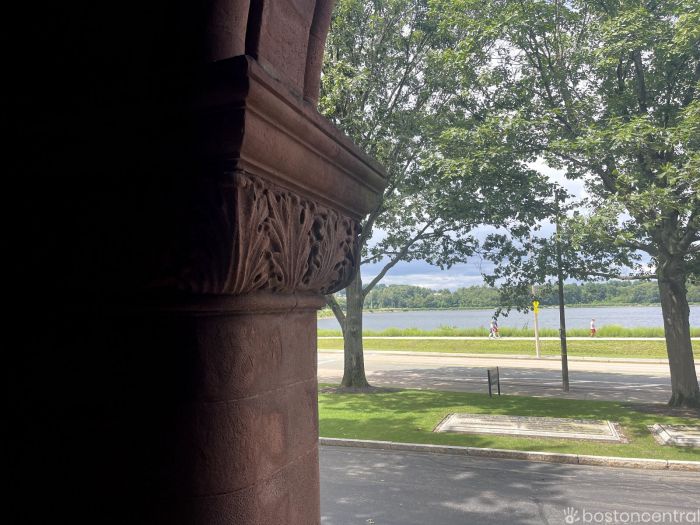
To get a sense of location, in the near distance to the left of the photo above, (not shown) you can see the Boston College Tower and the back wall of the Football Stadium.
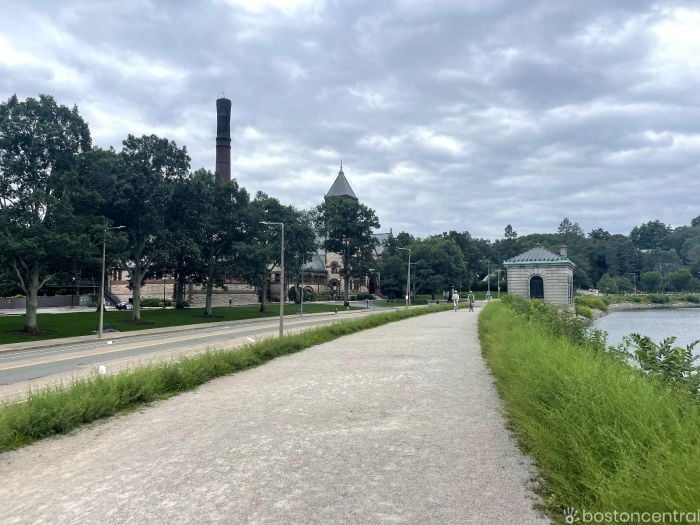
Metropolitan Waterworks Museum
2450 Beacon St, Chestnut Hill, MA 02467
For more information about things to do in the Boston Area in the, visit our guide to Free Things to Do in Boston, great ideas for Rainy Days in Boston, or a handy list of some of Boston's most interesting Museums.
In addition to these lists, we took a reader poll to find some more terrific hidden gems, and .a number of popular guides ranging from Boston Outdoor Activities, Boston Bowling Alleys, and Petting Zoos and Farms, to specific venue reviews like Worlds End, the Boston Public Market, and The American Heritage Museum to name a few.
If ice cream is your thing, you'll find some delicious options in our Boston Ice Cream guide.
You can also stay on top of all the fun happenings in Boston with our Boston events calendar. We highlight lots of family-friendly events and activities to help you make the best of your free time. 
Stacey Sao has been the Managing Director of the family-friendly events and activities website, BostonCentral for over 20 years. She continues to enjoy discovering and exploring new places to visit in the Greater Boston area.


